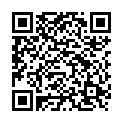|
|
|
| Module code: ABBG41 |
|
|
4V (4 hours per week) |
|
5 |
| Semester: 2 |
| Mandatory course: yes |
Language of instruction:
German |
Assessment:
Exam (minimum of 75% to pass) 60 minutes Air Law, 45 minutes Operational Procedures
[updated 01.10.2020]
|
Exam recurrence:
The information regarding exam recurrence is found within the exam policy of the study programme (ASPO).
|
ABBG41 (P410-0026) Aviation Business (Basic), Bachelor, ASPO 01.10.2015
, semester 2, mandatory course
ABBG41 (P410-0026) Aviation Business (Basic), Bachelor, ASPO 01.10.2018
, semester 3, mandatory course
|
60 class hours (= 45 clock hours) over a 15-week period.
The total student study time is 150 hours (equivalent to 5 ECTS credits).
There are therefore 105 hours available for class preparation and follow-up work and exam preparation.
|
Recommended prerequisites (modules):
None.
|
Recommended as prerequisite for:
ABBG411 ATPL Test Preparation
ABBG62 Visual Flight Training II
[updated 12.05.2016]
|
Module coordinator:
Studienleitung |
Lecturer:
Matthias Lehmann (lecture)
Rolf Weymar (lecture)
[updated 04.05.2016]
|
Learning outcomes:
Airlaw Part 1:
After successfully completing this course, students will have knowledge about international agreements and organizations. They will be familiar with national and international legal bases of aviation. Students will be familiar with aircraft registration marks, have knowledge about flight crew licensing and be able to apply rules of the air while planning and conducting VFR flights.
Operational Procedures Part 1:
Students will have knowledge about the regulatory framework of commercial flight operations and the procedures that are used. They will be able to apply this knowledge in the decision making process of planning and conducting flight duties.
[updated 01.10.2020]
|
Module content:
Airlaw Part 1:
1. International law, conventions, agreements and organizations
2. Airworthiness of aircrafts, aircraft nationality and registration marks
3. Personnel licensing
4. Rules of the air (VFR)
5. Procedures for air navigation services and aircraft operation PANS OPS
6. Air traffic services and management
Operational Procedures Part 1
1. Flight and cabin crew regulations according to Regulation(EU) 965 2012 Part CAT
2. Flight and duty time regulations
3. Aircraft instruments and equipment
4. Pre-flight planning
5. Special operations and hazards
5.1. Fire and smoke
5.2. Wake turbulence
5.3. Emergency and precautionary landings
[updated 01.10.2020]
|
Teaching methods/Media:
Lectures, exercises/ppt and keynote presentations, white board, flip chart, iTunes U, iPad or MacBook,
[updated 01.10.2020]
|
Recommended or required reading:
_ ATPL learning objectives, EASA 2016
_ ATPL Airlaw, Slate Ltd. 2013
_ ATPL Operational Procedures, Slate Ltd. 2012
_ AIP Germany
_ Regulation (EU) 965 2012 Part CAT / AMC and GM to Part CAT
_ Regulation (EU) 923 2012 Part SERA / AMC and GM to Part SERA
_ Regulation (EU) 1178 2011, 245 2014 Part FCL, Part MED / AMC and GM to Part FCL
_ ICAO Annex 1, 2, 6, 7, 8
_ LuftVG
_ LuftVO
_ LuftVZO
_ LuftPerV
[updated 01.10.2020]
|


